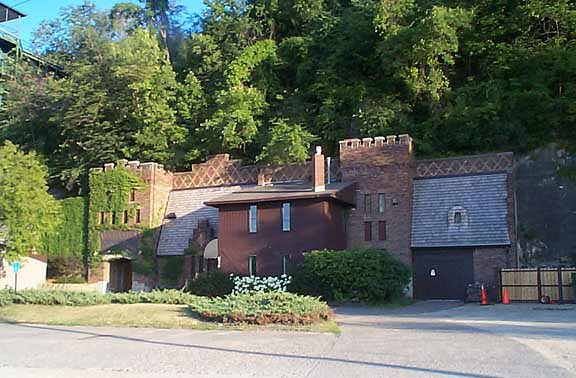Castle Royal
St. Paul
This most fascinating venue had two addressess (6 West Channel Street and 215 So. Wabasha in St. Paul ) and several iterations through the years.
SAND AND MUSHROOMS
Approximately 50 caves were created in the bluffs above the Mississippi River in St. Paul in 1840 by the mining of silica sand for glass making. In 1899, French immigrant Albert Mouchnotte found that constant temperature of 48 degrees was ideal for mushrooms to flourish, and started growing mushrooms in seven of the caves. Mouchnotte sold the mushrooms, first to the finest restaurants in St. Paul, and then around the world. During the early 1900s the bluffs became known as Mushroom Valley. Other caves were used for cheese making and beer brewing.
SPEAKEASIES
In the 1920s, the main cave became a series of speakeasies, the first of which was known simply as the Wabasha Street Speakeasy, complete with its own whisky still.
MYSTIC CAVERNS
Ezra Gray explains:
Before Castle Royal there was Mystic Caverns. For a minute, anyway. The fascinating, mostly forgotten story of the brothers Foster, who opened a nightclub like no other inside one of the old glass mines in the East Side river bluffs.
Local gangsters quickly pushed their way in, installing card tables and a roulette wheel in the back. “Floating Flo,” performing a nude(ish) dance à la Sally Rand, appeared briefly on their band stage in the autumn of 1933, creating – not a scandal, really – a local story of interest.
Sadly, the enterprise was ill-fated and short-lived. The brothers somehow ran afoul of local law enforcement’s “night club protective association.” They were out of business by the end of 1934.
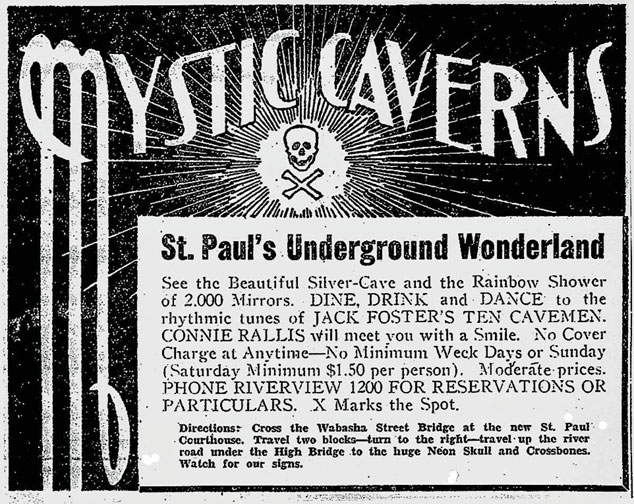
Mystic Caverns were featured in the September 1933 (?) issue of Modern Mechanix and Inventions, shared on Facebook by Ezra Gray. Caption for the photos below:
- Interior view of the Mystic Caverns of St. Paul, where revelers disport themselves beneath 150 feet of sold sand rock, in a temperature of 48 degrees plus 8 degrees of artificial heat.
- Left: The entrance to the subterranean chamber – a huge gorilla mouth at the base of a towering sandstone cliff bordering the Mississippi River.
- Right: The Bar, a favorite rendezvous.
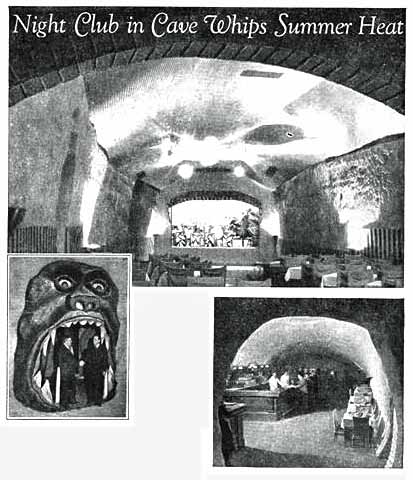
The text of the feature above reads:
St. Paul, Minnesota, boasts a new night club said to be without equal anywhere in the world for novelty and comfort during torrid summer months. Called the “Mystic Caverns,” the club occupies a labyrinth of caves which form a natural refrigerator with a year round temperature of 48 degrees.
The subterranean chambers where the revelers disport themselves have their opening in the face of a towering sandstone cliff bordering the Mississippi. Once you step inside you are literally in the bowels of the earth, with solid sandstone walls all around you and 150 feet of solid sandrock overhead.
About eight degrees of heat make the atmosphere decidedly comfortable inside the caverns when the mercury is flirting with the hundred mark outdoors. In winter, 20 degrees of furnace heat convert the labyrinthe chambers into a cozy beer hall.
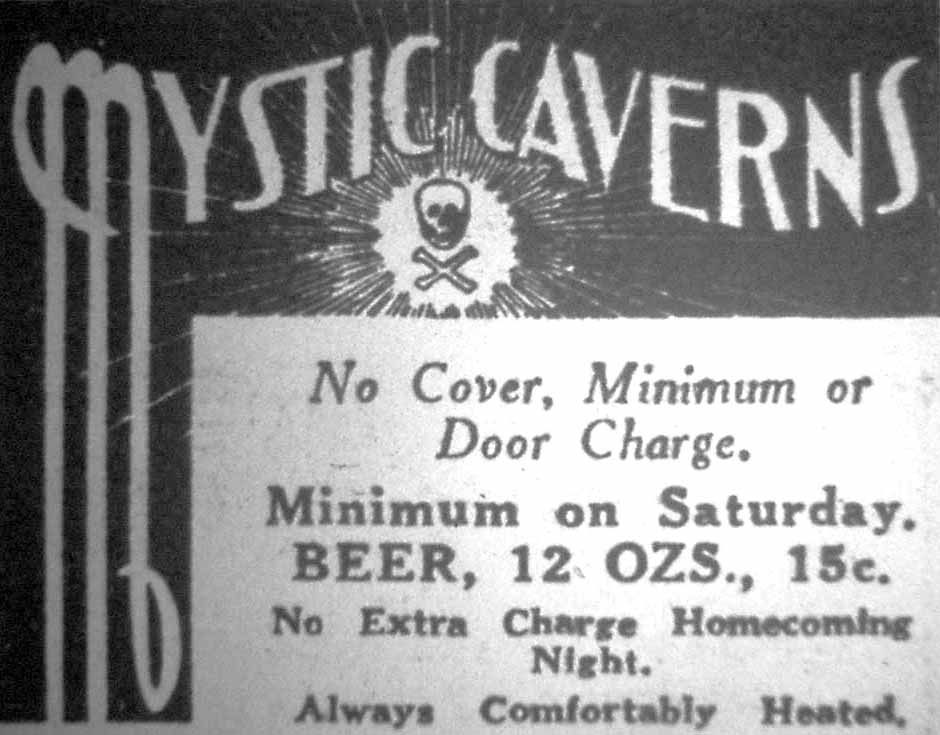
CASTLE ROYAL
From the Lehmann Farms website:
Eventually, Albert Mouchnotte’s daughter Josie and her husband William Lehmann took over the mushroom business. In 1932, they began to convert the main cave into a nightclub. It opened just as Prohibition ended, [October 26, 1933] as the Castle Royal. The club received the first post-Prohibition liquor license in St. Paul. Musicians such as Cab Calloway, Dorsey brothers and Henry James played at the nightclub. Craps and poker took place in the back rooms.
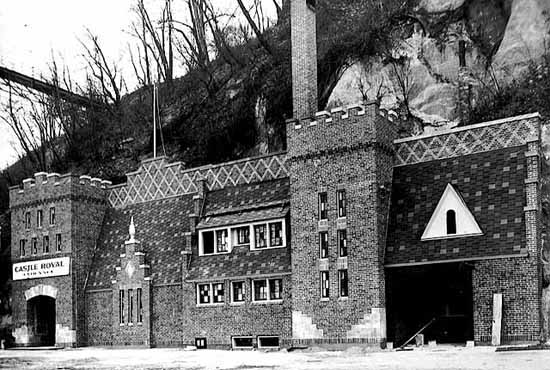
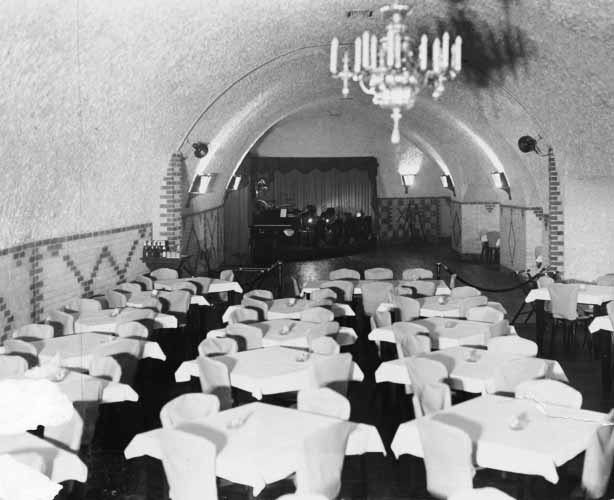
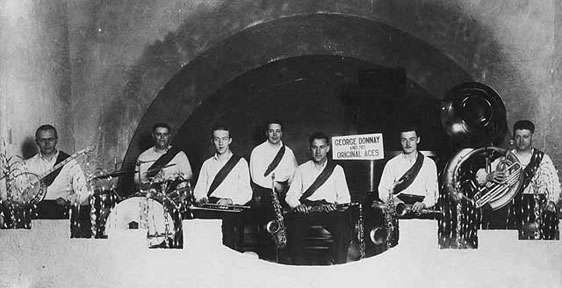
Lehmann Farms website:
Castle Royal was reputedly a favorite of gangsters. St. Paul police chief John O’Connor allowed some of the FBI’s most-wanted criminals to use his city as a sanctuary as long as they didn’t commit crimes in St.Paul. Gangsters such as Ma Barker, Baby Face Nelson, and John Dillinger used St. Paul as a haven, reportedly spending some time at the Castle Royal. Legend has it that there was a 1934 triple-murder in the caves involving Chicago gangsters (the bodies were never found).
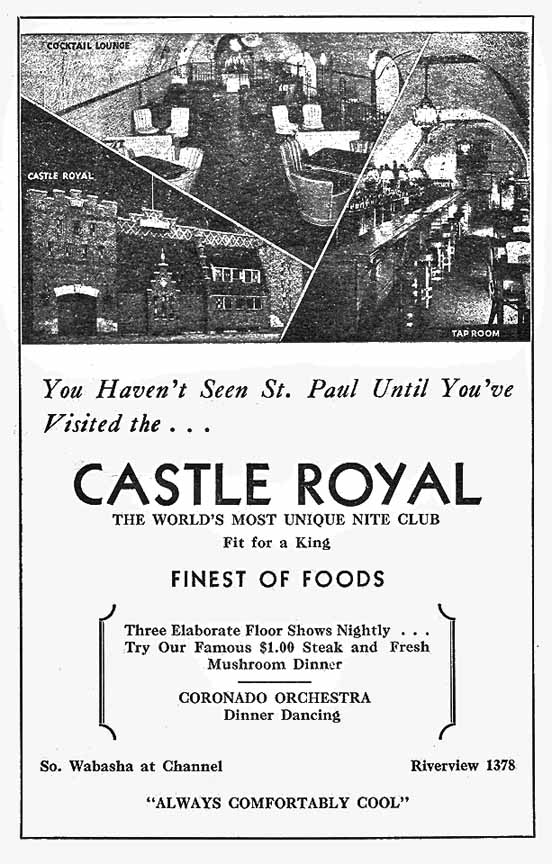
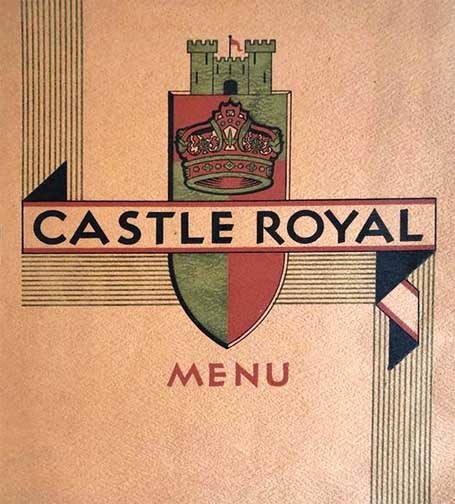
AFTER CASTLE ROYAL
Lehmann website:
From 1941 to 1965 the caves again became the focus of the family mushroom business. The business ran under a few different names during the time including, “Lehmann’s Hot House” and the “Wm. F. Mushroom Company.” In 1965 William Lehmann sold the caves and moved the business to Lake Elmo where he constructed above-ground sheds to grow the mushrooms.
What happened next is difficult to pin down, probably because there is a series of caves. Here are various accounts, in no particular order:
- The caves were renovated in 1972.
- A disco called the Castle Royal 2 opened in the ’70s.
- Fires were started by the homeless.
- There were “a few failed business attempts.”
- There was a huge flood, which wiped out the housing along the river.
- (Two of) the caves were taken by the city and were filled with flood debris.
- The caves went into bankruptcy and were owned by a bank.
- The bank was about to tear down the outside façade when the caves were purchased with the goal to restore the caves to their former glory.
WABASHA STREET CAVES
Now called Wabasha Street Caves, the venue offers tours and dances, and can be rented for events. The venue’s 12,000 square feet is finished with brick walls, stucco ceilings, carpeted dining space, a hardwood dance floor, a theatrical stage, and a 60 foot bar. Geothermal energy is used to limit fuel need for heating and eliminate the need for air conditioning. See http://www.wabashastreetcaves.com/
